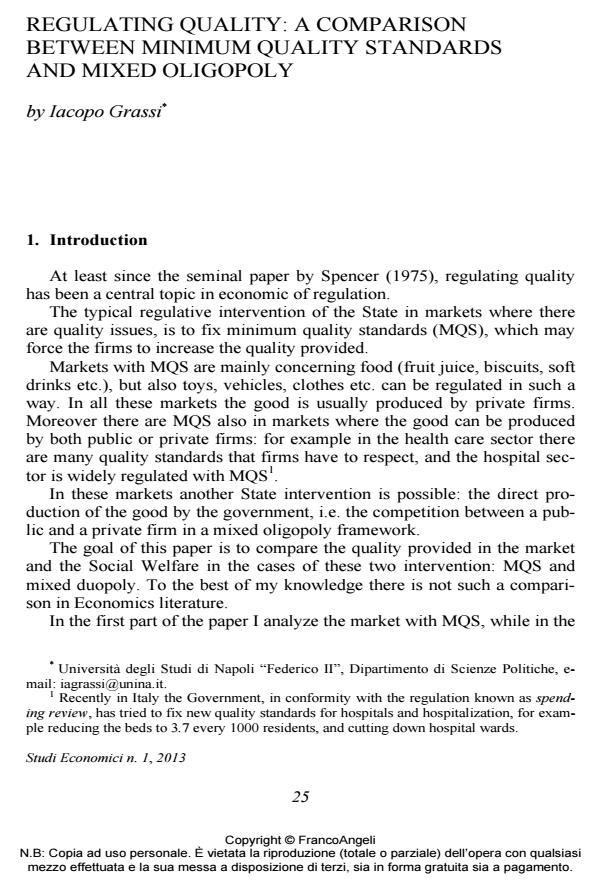Regulating quality: a comparison between minimum quality standards and mixed oligopoly
Titolo Rivista STUDI ECONOMICI
Autori/Curatori Iacopo Grassi
Anno di pubblicazione 2014 Fascicolo 2013/109
Lingua Inglese Numero pagine 20 P. 25-44 Dimensione file 157 KB
DOI 10.3280/STE2013-109002
Il DOI è il codice a barre della proprietà intellettuale: per saperne di più
clicca qui
Qui sotto puoi vedere in anteprima la prima pagina di questo articolo.
Se questo articolo ti interessa, lo puoi acquistare (e scaricare in formato pdf) seguendo le facili indicazioni per acquistare il download credit. Acquista Download Credits per scaricare questo Articolo in formato PDF

FrancoAngeli è membro della Publishers International Linking Association, Inc (PILA)associazione indipendente e non profit per facilitare (attraverso i servizi tecnologici implementati da CrossRef.org) l’accesso degli studiosi ai contenuti digitali nelle pubblicazioni professionali e scientifiche
This paper compares two possible State interventions in a market where a vertical differentiable good is produced: minimum quality standards (MQS) and mixed competition. In the analysis of MQS I consider an endogenous standard, given by the maximization of the Social Welfare, and the possibility for the firms not to respect such a standard, selling a low quality illegal good. In the study of the mixed oligopoly I concentrate the analysis on sectors where there might be separation between managers (who set the prices maximizing the profit) and employees (who set the quality maximizing the social welfare). The main result is that in these sectors the presence of the public firm allows to increase the Social Welfare with respect to the case when the good is produced by private firms or by a firm regulated with MQS.
Parole chiave:MQS, mixed oligopoly, quality, regulation, piracy.
Jel codes:L13, L50, H44
Iacopo Grassi, Regulating quality: a comparison between minimum quality standards and mixed oligopoly in "STUDI ECONOMICI " 109/2013, pp 25-44, DOI: 10.3280/STE2013-109002